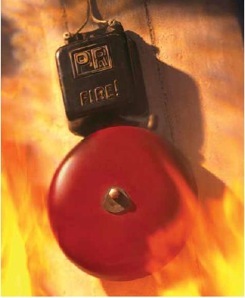When purchasing a home, the mortgage company often requires a certain amount of insurance to protect its investment, something a homeowner would want protected as well. For single family homes, it's pretty much cut and dryinsure the structure(s) and reduce potential liability on the property. Additional insurance provisions may also be outlined in the association's Covenants, Conditions, and Restrictions (CC&Rs) as well as through the insurance agent you've selected.
Owners in single-family planned communities need only to insure their best interests, including but not limited to, dwelling, other structures, and personal property. The association is responsible for insuring the common areas and any amenities of the community. What that translates to is that should someone get hurt on community property (park, playground equipment, poolwhatever the association owns), a claim would be filed against the association's insurance policy and not against an individual homeowner's insurance policy. However, condominium and townhouse insurance (hereinafter referred to as Condominium) is not so simple.
Why is that? Many condominium owners think they only need to insure their personal possessions and not the structure because they own the air within their unitssimilar to apartment rental insurance. That type of thinking can be costly. Condominium owners own much more than personal possessions and the air in which they live. Condominium owners literally own a piece of the pie.
In this type of community, it is often assumed that the association is responsible for covering the structure of the buildings and all that comprise their units. This too can be a costly assumptionone that an owner may not be prepared to pay should a catastrophe occur. As an example, an association's master insurance policy may cover:
- Structural building elements, including wiring, piping, and HVAC systems;
- Perimeter and partition walls, including windows;
- Drywall, plaster, and primer; and
- Flood and earthquake damage to property and deductible.
Based on the above example, the owner could then be responsible for:
- Regular plumbing fixtures and cabinets for kitchen and bath;
- Floor, wall, and ceiling coverings;
- Additions and alterations made to the unit;
- Decorating: paint, paneling, wallpaper, etc.
- Personal property (furniture, clothing, etc.);
- Personal property of special value (artwork, jewelry, cameras, etc.);
- Flood and earthquake damage to property; and
- Association and individual insurance deductibles.
This is just an example and please don't take it as gospel. It is extremely important that owners read their association's CC&Rs, obtain a copy of the association's insurance certificate, and seek clarification on what is covered/not covered from the insurance agent if at all possible. Common and limited common elements are unique to each association. Don't assume anything.
Insurance coverage for condominiums doesn't end here. Condominium owners share an interest in the common areas (referred to as tenant-in-common ownership), which is based on the total number of units within the community. For a community of 150 units, each owner would own a 1/150 th interest of the common elements. It might not appear to be a big dealafter all, what is a 1/150 th interest worthbut should a serious injury or death occur on common property, that 1/150 th interest could possibly cost you a million dollars or more, which would come out of your pocket if it wasn't covered in your policy. The cost of the extra insurance coverage is minimal and well worth it.
On the flip side of the coin, associations worry that owners may not be adequately insuring themselves. To protect the association's interest, attempts are made to gather insurance information from each owner on an annual basis. This request is not made to hassle owners but to protect their interests as well.
The bottom line? Review your current policy to make sure you have the appropriate insurance coverage on your unit, speak with your licensed insurance agent regarding your tenant-in-common ownership, and provide a copy of your insurance certificate to the association. As the old saying goes, an ounce of prevention is worth a pound of cure.
 Print
Print Email
Email








